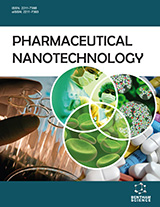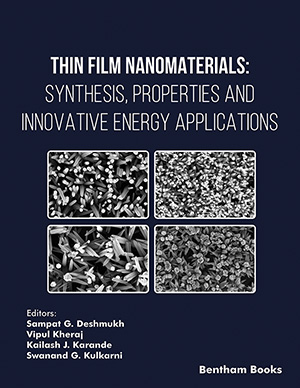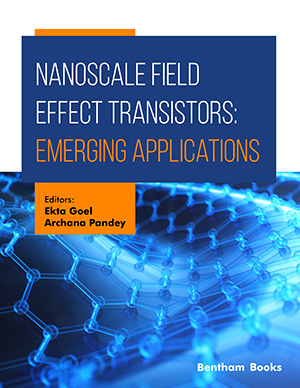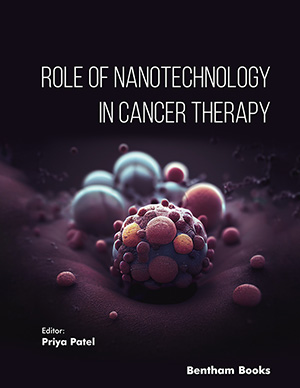
Abstract
This paper reports the fabrication of multi-functionalized gold nanoparticles (MFAuNPs) and the application to electrochemical detection of nitrite. While gold nanoparticles are modified with thiolated oligonucleotides as usual, they are also immobilized with 5- [1, 2]dithiolan-3-yl-pentanoic acid [2-(naphthalene-1-ylamino)-ethyl]amide (DPAN). Therefore, the oligonucleotides molecules can enhance the solubility of the MFAuNPs and absorb hexaammineruthenium(III) chloride ([Ru(NH3)6]3+) as electrochemical species on the one hand, with the help of nitrite ions, DPAN immobilized on MFAuNPs will react with 4-(2-aminoethyl)benzenamine which has been previously modified on the surface of a gold electrode on the other hand, thus an electrochemical method for nitrite detection is also proposed. Although the maximum contaminant level (MCL) defined by the Environmental Protection Agency (EPA) for nitrite in drinking water is as low as 1 ppm (21.7 μM), which is difficult to make detections by the current techniques, the proposed method in this work can give very satisfactory results.
Keywords: Cyclic voltammograms, detection, DNA, griess reaction, multi-functionalized gold nanoparticles, nitrite
Current Nanoscience
Title: Fabrication of Multi-functionalized Gold Nanoparticles and the Application to Electrochemical Detection of Nitrite
Volume: 7 Issue: 3
Author(s): Peng Miao, Zhiqiang Liang, Lei Liu and Guifang Chen
Affiliation:
Keywords: Cyclic voltammograms, detection, DNA, griess reaction, multi-functionalized gold nanoparticles, nitrite
Abstract: This paper reports the fabrication of multi-functionalized gold nanoparticles (MFAuNPs) and the application to electrochemical detection of nitrite. While gold nanoparticles are modified with thiolated oligonucleotides as usual, they are also immobilized with 5- [1, 2]dithiolan-3-yl-pentanoic acid [2-(naphthalene-1-ylamino)-ethyl]amide (DPAN). Therefore, the oligonucleotides molecules can enhance the solubility of the MFAuNPs and absorb hexaammineruthenium(III) chloride ([Ru(NH3)6]3+) as electrochemical species on the one hand, with the help of nitrite ions, DPAN immobilized on MFAuNPs will react with 4-(2-aminoethyl)benzenamine which has been previously modified on the surface of a gold electrode on the other hand, thus an electrochemical method for nitrite detection is also proposed. Although the maximum contaminant level (MCL) defined by the Environmental Protection Agency (EPA) for nitrite in drinking water is as low as 1 ppm (21.7 μM), which is difficult to make detections by the current techniques, the proposed method in this work can give very satisfactory results.
Export Options
About this article
Cite this article as:
Miao Peng, Liang Zhiqiang, Liu Lei and Chen Guifang, Fabrication of Multi-functionalized Gold Nanoparticles and the Application to Electrochemical Detection of Nitrite, Current Nanoscience 2011; 7 (3) . https://dx.doi.org/10.2174/157341311795542345
| DOI https://dx.doi.org/10.2174/157341311795542345 |
Print ISSN 1573-4137 |
| Publisher Name Bentham Science Publisher |
Online ISSN 1875-6786 |
Call for Papers in Thematic Issues
Advanced Inorganic Nanocomposites and their Emerging Applications
This special issue will highlight developments in the recent trends in the synthesis of metal oxides, nanoclusters, biomaterials, 2D nanomaterials, nanocrystals, nanocomposites, etc., and their applications in electrochemical systems, tissue regeneration, energy storage and harvesting, sensors, etc. The novelty of the methods in the chemical synthesis, as well as their ...read more
Advanced Nanotechnology in Forensic Science: Revolutionizing Fingerprint Identification and Crime Scene Analysis
This special issue aims to provide a comprehensive exploration of the innovative fusion between nanotechnology and forensic science. It aspires to bridge the gap between traditional investigative techniques and cutting-edge nanoscale applications, envisioning a paradigm shift in forensic analysis. By compiling the expertise of multidisciplinary experts, the book's objectives include ...read more
Graphene and 2D Materials for Energy Storage and Conversion.
This thematic issue will discuss the recent advances in graphene-based nanomaterials for different energy technologies. Graphene possesses a high surface area, and stable structure and exhibits many interesting electronic, optical, and mechanical properties due to its 2D crystal structure. Graphene is of both fundamental interest and suitable for a wide ...read more
Nanopathology; A Promising Approach for Targeted Cancer Treatment
Cancer is the most challenging diseases in treatment worldwide. Recently, the nanotechnology opened the gate for targeting the cancer as a promising therapy. The small size and exceptional properties of nanoparticles give it several advantages for easily targeting of cancerous cells. Furthermore, this advantage allows them to easily penetrate deeply ...read more
Related Journals
 13
13
- Author Guidelines
- Graphical Abstracts
- Fabricating and Stating False Information
- Research Misconduct
- Post Publication Discussions and Corrections
- Publishing Ethics and Rectitude
- Increase Visibility of Your Article
- Archiving Policies
- Peer Review Workflow
- Order Your Article Before Print
- Promote Your Article
- Manuscript Transfer Facility
- Editorial Policies
- Allegations from Whistleblowers
Related Articles
-
The Adenosine A2b Receptor: Its Role in Inflammation
Endocrine, Metabolic & Immune Disorders - Drug Targets The Ubiquitin-Proteasome System (UPS) and the Mechanism of Action of Bortezomib
Current Pharmaceutical Design Identification of AHSA1 as a Potential Therapeutic Target for Breast Cancer: Bioinformatics Analysis and <i>in vitro</i> Studies
Current Cancer Drug Targets CCL2-CCR2 Signaling in Disease Pathogenesis
Endocrine, Metabolic & Immune Disorders - Drug Targets Nucleic Acid Carrier Systems Based on Polyethylenimine Conjugates for the Treatment of Metastatic Tumors
Current Medicinal Chemistry Iron Chelating Strategies in Systemic Metal Overload, Neurodegeneration and Cancer
Current Medicinal Chemistry Regenerative Potential of Stem Cell-derived Extracellular Vesicles in Spinal Cord Injury (SCI)
Current Stem Cell Research & Therapy Peripheral TRPV1 Receptors As Targets for Drug Development: New Molecules and Mechanisms
Current Pharmaceutical Design Liposomes in the Targeted Gene Therapy of Cancer: A Critical Review
Current Drug Delivery Clinical Relevance of Alternative Lengthening of Telomeres in Cancer
Current Topics in Medicinal Chemistry Phagoptosis - Cell Death By Phagocytosis - Plays Central Roles in Physiology, Host Defense and Pathology
Current Molecular Medicine Inhibition of EGFR Signaling by N-cyclohexyl-2-(1-(phenylsulfonyl)piperidin-4-yl) acetamide
Anti-Cancer Agents in Medicinal Chemistry The Association between NADPH Oxidase 2 (NOX2) and Drug Resistance in Cancer
Current Cancer Drug Targets Structure Based Lead Optimization Approach in Discovery of Selective DPP4 Inhibitors
Mini-Reviews in Medicinal Chemistry Molecular Biomarkers for Lung Adenocarcinoma: A Short Review
Current Cancer Therapy Reviews Vascular Endothelial Growth Factor (VEGF) as a Target of Bevacizumab in Cancer: From the Biology to the Clinic
Current Medicinal Chemistry Activation of CAR and PXR by Dietary, Environmental and Occupational Chemicals Alters Drug Metabolism, Intermediary Metabolism, and Cell Proliferation
Current Pharmacogenomics and Personalized Medicine Deubiquitinating Enzymes as Therapeutic Targets in Cancer
Current Pharmaceutical Design Is High Oral Dose L-arginine Intake Effective in Leukoaraiosis? Preliminary Data, Study Protocol and Expert’s Opinion
Current Aging Science Curcumin as an Anti-Cancer Agent: Review of the Gap Between Basic and Clinical Applications
Current Medicinal Chemistry




















